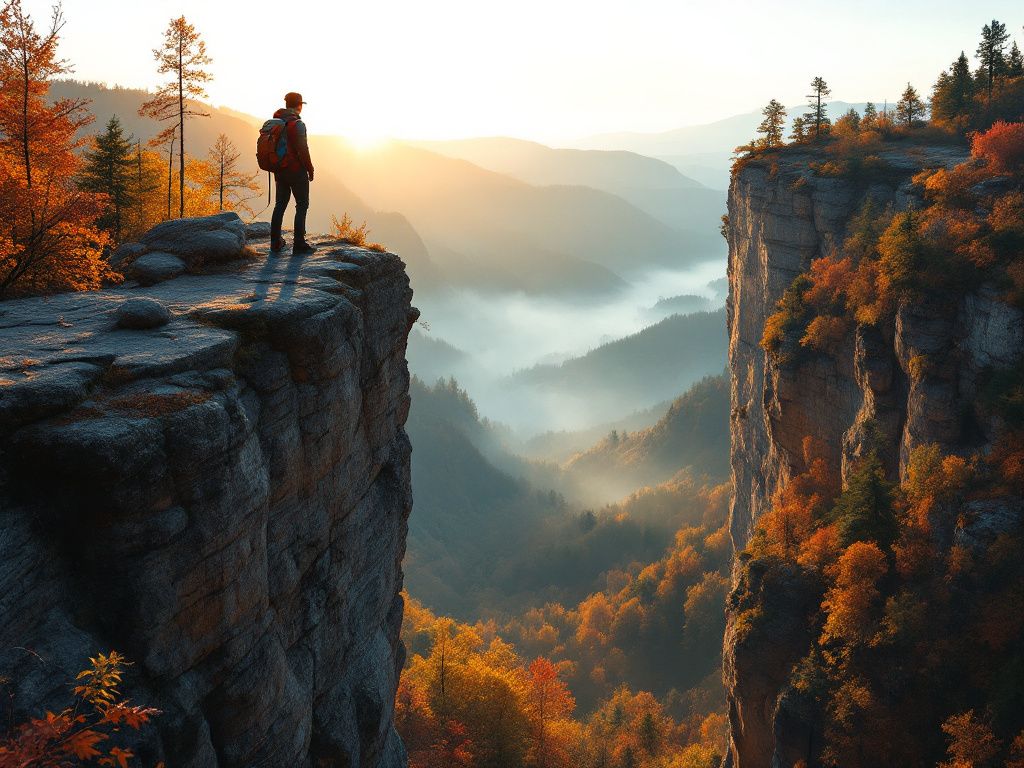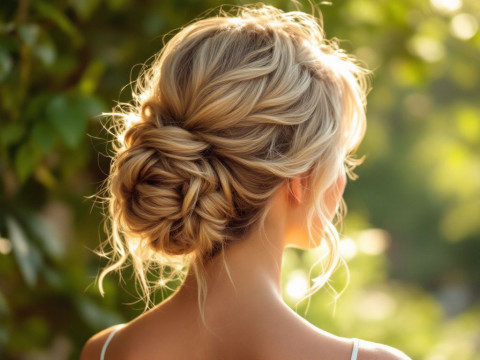Tackling the Elements: Fall Foliage Hiking and Your Skin
Have you ever set out on a crisp fall morning, excited to conquer your favorite trail, only to come back with skin feeling like it’s been through the wringer? Trust me, I’ve been there. Fall foliage hikes are breathtaking and therapeutic as nature spreads her blanket of fiery colors across the landscape. But let’s be real, as magical as it sounds, hiking during this season can take quite a toll on your skin.
Between the brisk autumn air and an ever-present, sometimes biting, wind, there’s a range of factors threatening to mess with your skin’s game plan. Fear not! With the right outdoor protection strategies, you can fully enjoy your hike without having your skin pay the price. Whether you’re a seasoned hiker or new to the trail, I’ve got you covered with simple, effective ways to guard that skin while soaking up all the autumn glory.
Navigating the Skincare Landscape: Get to Know Your Skin
Before we dive into the specifics, let’s pause for a brief roadmap of your skin’s needs. Think of your skin as the very gear you need for hiking. Each skin type—like, you know, different levels of hiking boots—needs the right kind of care.
- Oily Skin: Does it feel like no sooner do you apply lotion than it turns slicker than a mountain stream? You’ll need a lightweight, non-greasy formula. Aim for an ingredient-length list you could capture on a Post-It.
- Dry Skin: If your face usually looks like you could sketch maps on it with all the cracks, go in with a lovingly thick moisturizer. Hydration, hydration, hue intervention—don’t skimp on those ample amounts.
- Sensitive Skin: Walking on eggshells? The process is similar. Avoid that immediate itchiness by sticking to fragrance-free options that won’t further prick the skin’s patience.
Gear Up: Outdoor Protection Must-Haves

Alright, you’ve got your skin type down. Now you’ll need specific outdoor protection essentials for a successful fall hike. Think of it like packing your trail mix—varied components are needed to make it filling and protective!
1. Moisturizer: Your Skin’s Essential Layer
- For Moisture Love: A solid hydrating base is a must. Layer it on your face, neck, and hands to prevent wind burn and excessive dryness. Look for moisturizers with hyaluronic acid or glycerin which retain moisture remarkably well.
- For Weary Hands: Trust me, those stingy hands after climbing chilly rocks are no fun. Bring along a pocket-sized hand cream to reapply during the hike.
2. SPF: Not Just for Sunny Trails
- Essential Barrier: Even though summer has bid farewell, applying SPF is non-negotiable. Ultraviolet rays can cause mischief year-round. Aim for at least SPF 30, and remember, it’s not a “set it and forget it” job. Reapplying every couple of hours is the name of the game.
- Lip Sunblock: Ah, the ol’ forgotten area—using a lip balm with SPF can make sure you’re not sporting wind-blown miserably cracked lips terrain, that’s for sure!
3. Layering with Serums and Oils
- Serum Layer: Antioxidant serums, particularly those starring Vitamin C, act like shields, replenishing your skin after it battles cold temperatures and pollution. They’re especially excellent at battling the fury dry winds can bring.
- Face Oils: Dry winds call for extra moisture insurance. Light face oils like squalane can layer beautifully over your moisturizer, adding extra protection against festive fall gust degrees.
4. Balms and Brims: Specialized Senderoes

- Soothe with Balms: Think lip balms, hand balms, even cheek balms—a hands-on tactic to treat biting, dry, exposed areas.
- Hats and Sunglasses: Not exactly what you’d consider “skincare,” but seriously? They’re a game-changing physical barrier against sun and wind when you’re scaling splendid peaks. Remember those paparazzi shots of celebs hiding behind brims; well, this coverup? Totally acceptable!
The Rhythm of Reapplication: Master the Hack!
Okay, now for the last bit that’s somehow one of my top picks. Finding the rhythm or groove of reapplication. Basics are pretty much your typical 2-hour mantra with outdoor protection characters like sunscreen. Key here that often goes on unseen trips like shadows!
- 1 Hour Refresher Courses: Your friend carrying the spare water stores? Perfect moment while sharing a sip—take a break to venture with some sunscreen or moisturizer reworking. Calculate it with each thirsty hour.
- Trail Treat Stations: Whenever you’re pausing for a juicy apple or navigating your camera, insert some intent brushing some hand cream into the setlist of activities.
Nature Understanding: Respect The Elements

Embracing changes in temperature imparts heightened strategies necessary for skin’s strategy to combat diverse factors encountered. Forge a practical approach based on the current weather and terrain to equip the skin with optimal outdoor protection shields.
Key Weather Consideration Cheat Sheet
- Dry Coldness: Use Supreme Thick Moisturizer
- Brisk Winds: Add in face oil, keep covered!
- Sunny Bright: Recall high SPF as your partner
- Damp Drizzles: Include essence layers less heavy
When we can seize the spirit of weather resilience, shifting gear need becomes visibly radical remainder.
Final Thoughts
Embracing the beauty of fall foliage comprises understanding Spirit and Skin coalesce, bonding heart strings with your own natural frequency. Applying vigilance translates through preparation, linked smart choices, prompts reminders thrilling explorations—a master traveler accompanied by values understood deeply finally connecting roads with authenticity.
Now, remember to put this private knowledge into practice. Whether solo wanderer or touring nature pals adventures, fold these outdoor protection essentials into preparation stages—arms extended to encompassing foliage soon capture you in!
So, before hitting trails for reveling in trails stirred with color symphonies begging exploration—Go! Encounter unlocked settings not missed! Thus mollify skins, adorn experience textures equipped admirably—run sibling sobriety ahead captivated hiking greatness kindled freshly alongside.
Frequently Asked Questions
What are the most effective ways to protect outdoor furniture from the elements?
Protecting outdoor furniture from the elements involves several key strategies. Installing a reliable porch cover, retractable awning, or pergola roof can provide initial protection from rain, snow, and UV rays. Additionally, using high-quality furniture covers that are water-resistant or waterproof, and ensuring they fit snugly, is crucial. Regular cleaning and maintenance, as well as storing furniture indoors during harsh weather conditions, can also extend the lifespan of your outdoor furniture[1][3][5>.
How can I choose the right covers for my outdoor furniture?
Choosing the right covers for your outdoor furniture involves considering several factors. The cover’s material should be resilient and high-grade, such as polyester or vinyl, to withstand various weather elements and UV harm. Ensure the cover fits snugly to prevent moisture from entering, and look for features like tie-downs for wind defense and vents for air circulation. Reading customer reviews and comparing different brands for quality is also recommended[3][5>.
What are the benefits of using locks for outdoor furniture?
Using locks for outdoor furniture provides several benefits, including protection against theft, vandalism, and accidental damage. Locks can also be covered under insurance policies, offering financial protection. It is important to choose locks that are weatherproof to withstand harsh conditions like rain, snow, and intense sun. Regular maintenance of the locks, such as lubricating the mechanism and checking for signs of wear, is also essential[4>.
How often should I clean and maintain my outdoor furniture?
Regular cleaning and maintenance are crucial for extending the lifespan of your outdoor furniture. Develop a routine to clean your furniture using mild soap, water, and a soft brush or cloth. For fabric components, regular cleaning and spot-treating stains can prevent mildew growth. Additionally, applying protective coatings or sealants, especially for wooden furniture, and storing cushions indoors when not in use can help maintain the condition of your furniture[1][3][5>.
References









